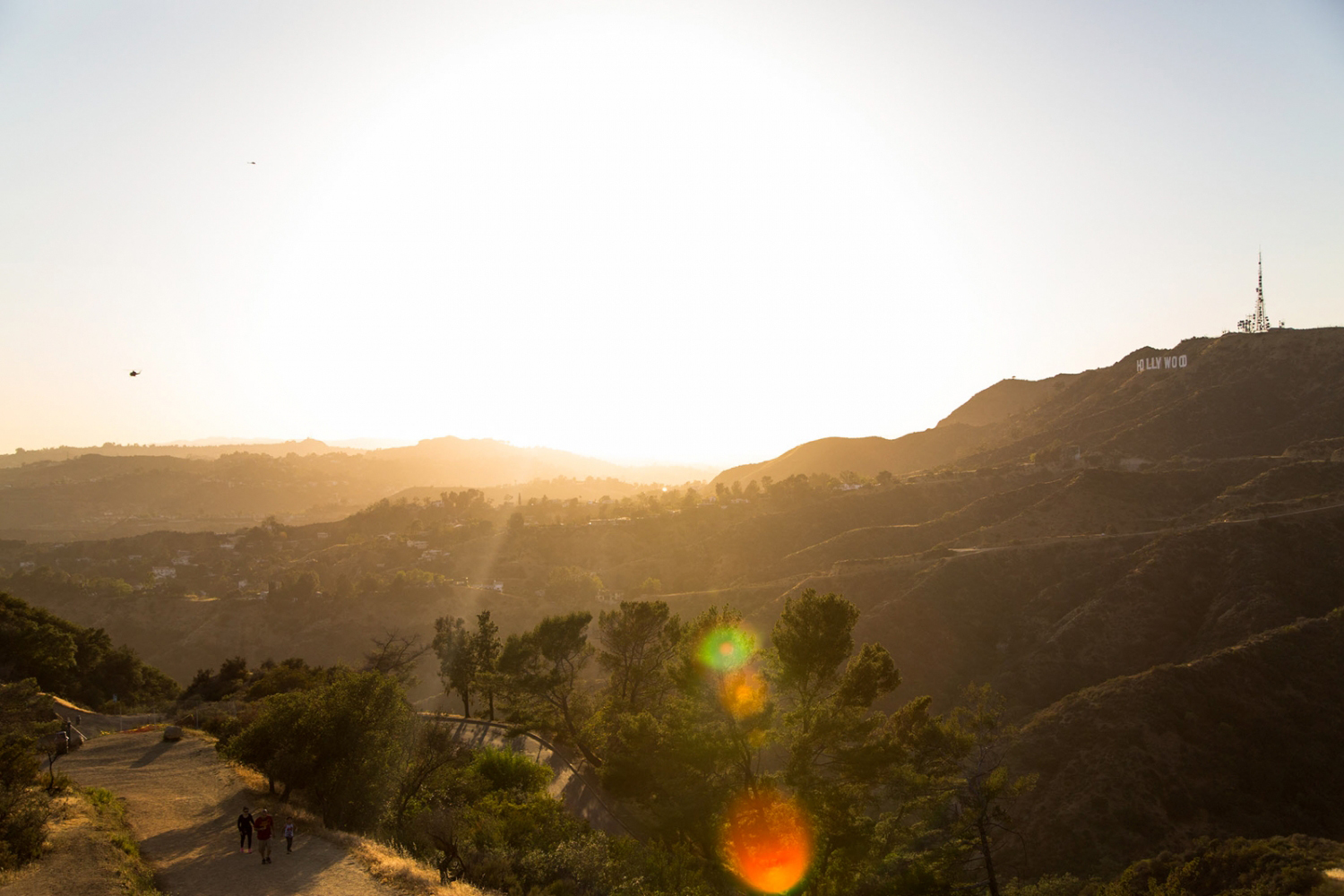Book Review: ‘10,000 Steps a Day in L.A.’

Walk 16 in “10,000 Steps A Day in LA” features the Hollywood Sign. The book highlights 52 walks around the city. (Owen Emerson/Daily Bruin senior staff)
By Kelsey Stern
Sept. 30, 2015 8:56 a.m.
Walking in Los Angeles seems to be a lost art.
Angelenos and tourists that have flocked to the City of Angels in the past years have traded in their legs for gasoline-guzzling cars that sit on the streets in bumper-to-bumper traffic for several hours each day.
With all the time spent in the car and office, it can be easy to see how people put off working out. But since focus on fitness is greater than ever thanks to the power of social media, empowering Under Armour campaigns and the athletic-wear fashion trend, the pressure to stay in shape cannot be ignored. That’s why Paul Haddad’s book “10,000 Steps a Day in L.A.” offers a great concept – get fit while also exploring the city, proving that L.A. is more than a jammed highway.
Since Los Angeles expands far beyond just its downtown, Haddad splits his book into six regions, ranging from Central L.A. and the Westside, where UCLA is located, to the South Bay. He offers the readers 52 different paths, all approximately 10,000 steps each.
Haddad explains that the theory behind the 10,000 steps lifestyle dates back to the 1960s. Japanese doctor Yoshiro Hatano stated that 20 percent of a person’s daily calorie intake would be burned off if he or she walked this distance every day. Now, the Mayo Clinic, the U.S. Centers for Disease Control and the World Health Organization all back this statement.
It’s clear that Haddad knows his Los Angeles well, as the descriptions of each hike are extremely extensive. And while the information provided is intriguing, it’s almost too much.
It would make more sense if “10,000 Steps a Day in L.A.” were an audiobook, leading you through the path while also narrating the history and unknown fun facts that surround you.
Including these facts in the context of the book quickly transforms what should be a hiking map into a boring history lecture, whose notes readers will forget as soon as they step out on the trail.
The main issue with Haddad’s book is that most of the paths are paved and many weave through areas, like Chinatown in Downtown, that I could sightsee from inside the car.
However, for those who would like to explore the metropolitan areas of L.A., Haddad does give a plenitude of good options. But, at least for college students, “Discovering Hidden Los Angeles,” as it reads across the cover, tends to mean trekking up the side of a mountain or hiking along the side of a creek, not walking on sidewalks or along highways.
That isn’t to say Haddad doesn’t offer a couple good trails. “Walk 6: Elysian Park West” is an out-and-back path in Central L.A. that winds its way through the park’s arboretum and later provides vantage points for Dodger Stadium and Avenue of the Palms.
“Walk 44: Franklin Canyon” in the Westside takes walkers through a portion of the Santa Monica Mountains and to upper Franklin Canyon Lake, the place where Andy and Opie fish at in the opening sequence of the iconic American television series, “The Andy Griffith Show.”
Haddad includes the iconic Hollywood Sign hike as Walk 16.
Like most L.A.-dwelling citizens, I have gone to the Hollywood Sign. My route, unlike the one included in the book, was an actual hike. Instead of following Mulholland Drive as Haddad suggests, I began my journey at the end of Wonder View Drive. The “path” soon became a steep, skinny trail which weaved its way up to the Wishing Tree, a must-see landmark. A solitary tree, with a box full of paper where people have stored away their wishes, overlooks the entire city.
After that pit stop, I continued along the crest of the mountain and eventually was dropped behind the Hollywood Sign, the destination of Haddad’s walk.
While I did follow Haddad’s path to get back down from the sign, it was far less spectacular than the sweeping view that the Wishing Tree and other peaks had provided.
Although Haddad includes some famous landmarks on his tours, one of my favorite hikes – the Murphy Ranch Trail – is not included in the book. Students should experience this trail because it offers beautiful overlooks of Malibu and the Santa Monica coastline, as well as a historical relic.
Murphy’s Ranch is located in Topanga Canyon. During the hike, the walkers will descend down the depths of the canyon by going down hundreds of steps. The key is finding one of these staircases, which are located on the left of the Topanga Canyon pathway.
Once the walkers reach the bottom of the canyon, the stairs will lead them to a graffiti-covered building that once was a Nazi compound. There, the walkers can spray-paint their name, absorb some history, then begin the long trek back up; hopefully, Drake Stadium prepared students’ quads.
The importance of walking at least 10,000 steps a day is indisputable. But Haddad can keep his paved walks; I’ll stay off the beaten trail and keep discovering L.A.’s true secrets by immersing myself in its nature.
– Kelsey Stern


